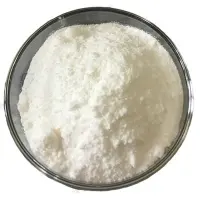-
Categories
-
Pharmaceutical Intermediates
-
Active Pharmaceutical Ingredients
-
Food Additives
- Industrial Coatings
- Agrochemicals
- Dyes and Pigments
- Surfactant
- Flavors and Fragrances
- Chemical Reagents
- Catalyst and Auxiliary
- Natural Products
- Inorganic Chemistry
-
Organic Chemistry
-
Biochemical Engineering
- Analytical Chemistry
-
Cosmetic Ingredient
- Water Treatment Chemical
-
Pharmaceutical Intermediates
Promotion
ECHEMI Mall
Wholesale
Weekly Price
Exhibition
News
-
Trade Service
Theof moisturizing cannot reduce the risk of neonatal eczemaDOI: https://doi.org/10.1016/S0140-6736 (19) 32984-8study found that skin barrier dysfunction predates the onset of eczema every day in the first year of life, and researchers recently examined the effects of daily use of moisturizing to prevent high-risk children in newbornsstudy in the UK, which recruits full-term children at high risk of eczema, at least 37 weeks of age for newborns, and at least one first-degree relative who has reported eczema, allergic rhinitis or asthmaFull-month newborns with a family history of the disease are randomly or not used daily on the basis of standard skin care recommendationsThe main result of the study was the incidence of eczema at age 2Of the 1,394 newborns who participated in the study, 693 were using moisturizers and 701 were controlsThe dependency of the moisturizer group was 88% (466/532), 82% (427/519) in 6 months, and 74% (375/506) in the 12 monthsAt age 2, 139 (23%) of the 598 infants in the moisturizer group developed eczema, and 150 (25%) of the 612 infants in the control group developed eczema (adjusted relative risk was 0.95 and the adjusted risk difference was -1.2%)The average number of skin infections in 1-year-old children in the moisturizer group was 0.23, the control group was 0.15, and the adjusted incidence was 1.55, neither emollients nor food can reduce the risk of asexual dermatitis in infants and young children
DOI: https://doi.org/10.1016/S0140-6736 (19) 32983-6researchers recently looked at the risk of effects of sexually active itis when starting to use regular emollients after 2 weeks of age or early complementary feeding after 12-16 weeks babies of women who received routine prenatal ultrasound pregnancy screening at 18 weeks were randomly divided into control groups at birth and had no specific recommendations for skin care, but recommended following the National Infant Nutrition Guidelines (no intervention group), skin moisturizers (bath gels and creams; skin intervention groups), early complementary feeding of peanuts, milk, wheat and eggs (food intervention group) or joint skin and food intervention groups (joint intervention group) for at least 4 days per week The main endpoint of the study was 12-month-old adhesion dermatitis Of the 2,397 newborns who participated in the study, 48 (8%) of the 596 infants in the non-intervention group developed atopic dermatitis, 64 (11%) of the 575 infants in the skin intervention group developed atopic dermatitis, 58 (9%) of the 642 infants in the food intervention group developed isotrophitis, and 31 (5%) of the 583 infants in the joint intervention group developed inothelial dermatitis Neither skin emollients nor early complementary feeding significantly reduced the risk of asexual dermatitis, which reduced the risk of skin intervention and food intervention by 3.1% and 1.0%, respectively, compared to control Interventions had no safety problems, and there was no significant difference in reported skin symptoms and signs (including itching, edema, rash, dry skin, and urticaria) : Be alert to the risk of infection after exposure to TB in infants and young children
DOI: https://doi.org/10.10140-6736 (20) 30166-5 , according to statistics, tens of millions of children worldwide are exposed to mycobacterium each year; this study, a systematic review and meta-study, collected data from 46 cohort studies from 34 countries -- 29 prospective studies (63%) and 17 retrospective studies (37%) A baseline assessment of 137,647 children exposed to TUBERculosis was conducted and 429,538 children were followed up in an annual follow-up period of 429,538 During this period, a total of 1,299 TB epidemic cases and 999 TB cases were diagnosed The cumulative incidence of tuberculosis in children who were not treated for TB infection was significantly higher than in children with negative infections, and the incidence of children under 5 years of age was highest (19.0 per cent) In all exposed children, the effectiveness of preventive treatment was 63% (adjusted HR: 0.37) and 91% of the effectiveness of preventive treatment was 91% in children with HIV-positive tuberculosis (adjusted HR: 0.09) Of all children under 5 years of age with tuberculosis, 83 per cent were diagnosed within 90 days of the baseline examination Source: MedSci Original







